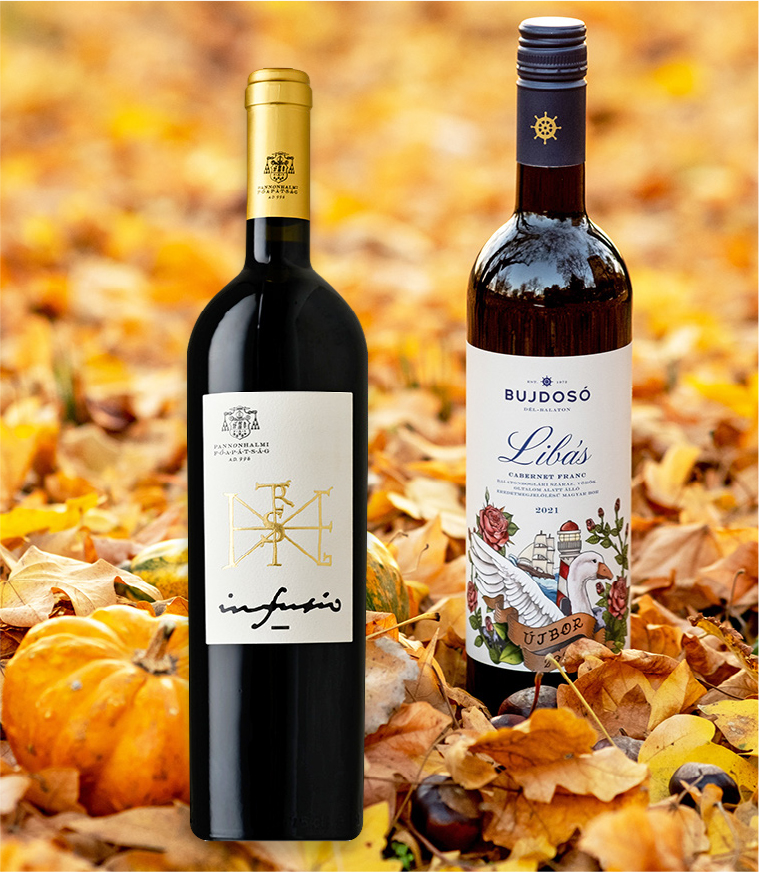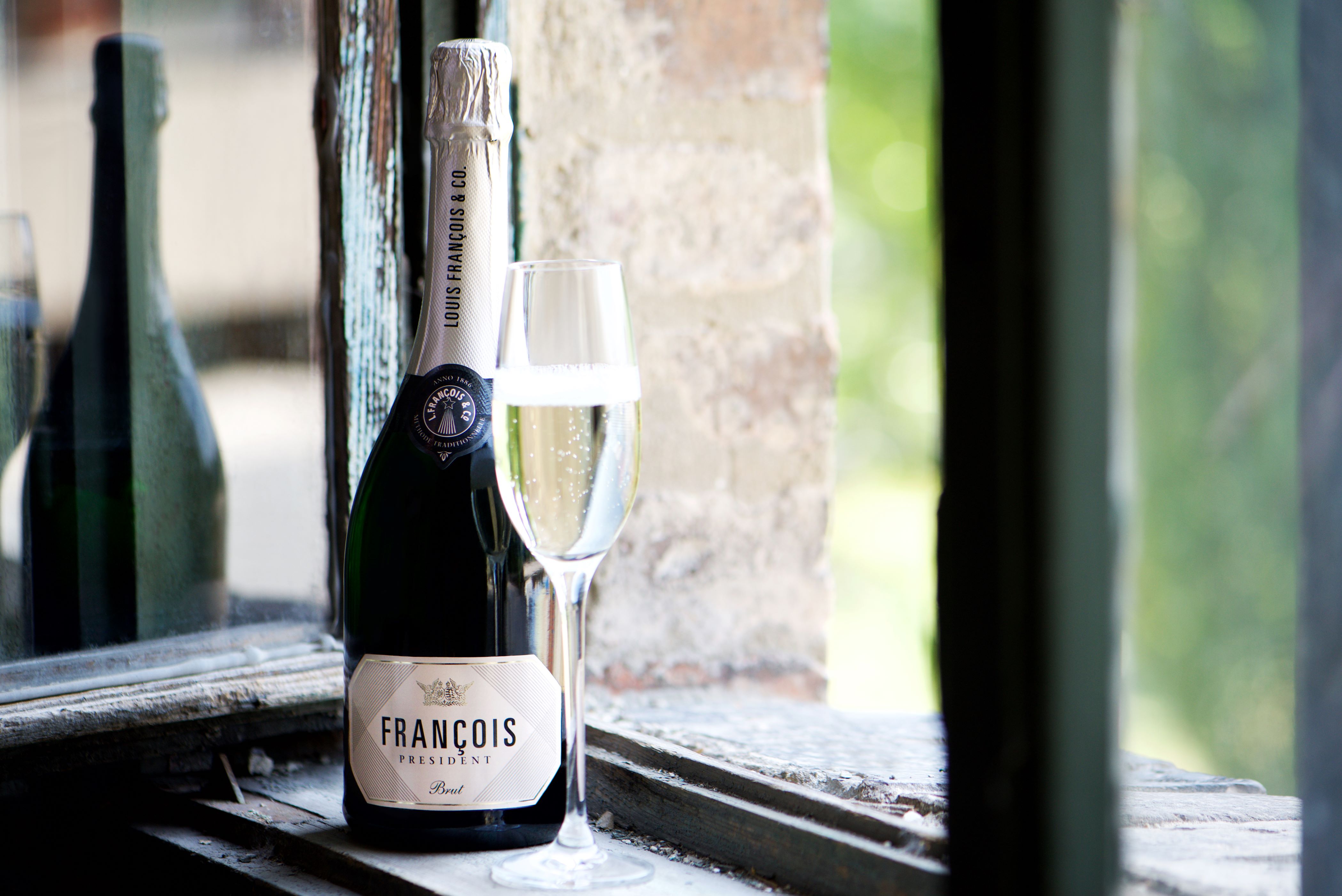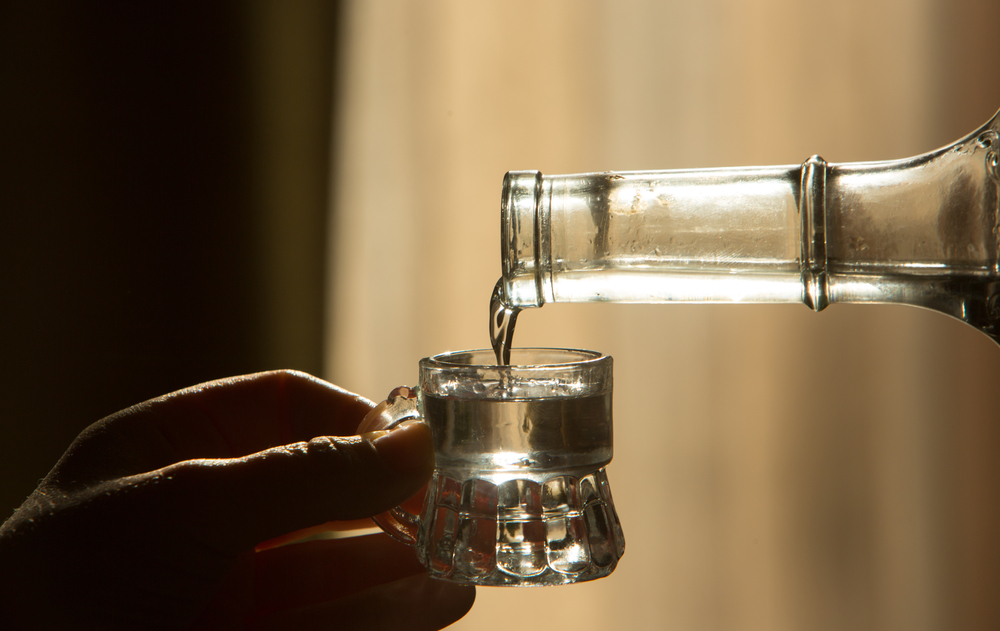Pleasant Surprises at the Bordeaux Grand Tasting

Out of a sea of predominantly turbo-charged tannic wines made from the Bordeaux varieties at the Winelovers’ Bordói November Nagykóstoló (Grand Tasting), held on November 20 at the Corinthia Hotel Budapest, came a most welcome wine to savor and also soothe palate fatigue.
From the Balatonboglár wine region on the southern side of Central Europe’s largest lake, Bujdosó Libás újbor (new wine) 2021 is made in the same way as Beaujolais, via a process known as semi-carbonic maceration. However, Ferkó Bujdosó, the young and much-traveled winemaker, learned the method during a stint working in New Zealand for the famous Matua winery, using the Pinot Noir grape.
The grapes are put into an open-topped tank, as whole bunches with the stalks attached, then start macerating (softening and breaking apart). The grapes at the top undergo intracellular fermentation, whereby the fermentation kickstarts inside the grapes, as carbonic gas takes up the space previously occupied by the oxygen from the air. The middle part now macerates, while the grapes at the bottom get compacted and give out juice. The yeasts naturally inherent in the grapes start to ferment the sugars in what is regular alcoholic fermentation. The overall result is a wine that is extremely fruit-forward and very light on tannins.
Bujdosó Libás újbor 2021 uses the Cabernet Franc grape variety and to great effect. It positively oozes zesty, primary flavors of raspberries, blueberries and blackberries, and is remarkably comparable to a good Beaujolais Nouveau in style and quality.
It is light and very fresh but has plenty of fruit to wrap around your tastebuds, without the bite of tannins that comes with fuller-bodied red wines, thanks to that semi-carbonic maceration process. It is a bargain for HUF 1,600 from bujdosó.hu. Incidentally, Bujdosó’s big reds have also been showing more of a refined, silky touch since Ferkó Bujdosó has brought home his experiences from making wine in several important foreign wine regions.
Memorable Wines
Tasting full-bodied, tannic reds for six hours can be challenging, but some wines certainly stuck out as memorable at the Bordeau November Grand Tasting. Despite the Pannonhalma wine region’s relatively cool climate in the northwest of Hungary, the Pannonhalmi Főapátság (archabbey) makes what is for me one of the most impressive Bordeaux-style blends in Hungary.
Infusio is an intense, concentrated and full-bodied wine that nevertheless has a welcome cool, zesty streak running through it. It hails from a plateau on the south-facing Babszökő vineyard, which has brown woodland soil with red clay.
The limited-edition Infusio 2019 has more Cabernet Franc (40%) than usual, with Merlot contributing 60%. It is very elegant with minty aromas that beautifully complement the intense black and red fruit, with sleek tannins and an extremely long, delicious finish. The high alcohol of 15% is nicely integrated and does not bring any burn. It costs HUF 8,950 from Bortársaság and apatsagipinceszet.hu.
The 2018 Infusio claimed the eighth spot in the 2021 edition of “Winelovers 100 legjobb Magyar Bor” (100 best Hungarian wines) and was the highest placed blend of Bordeaux varieties in the listing, although three single varietal Cabernet Francs, at which Hungary excels, came in above it; the highest-rated, Vesztergombi Pince’s 2017, came in third position overall.
Taking my long-kept (and long sold-out) bottle of Infusio’s 2016 vintage to a blind tasting of a dozen premium Bordeaux blends, including some heavyweight bottlings from Bordeaux itself, it was placed third, behind two French heavyweights. It had aged beautifully, with delightful fine-grained tannins and Christmas spices from the beautifully integrated oak, complementing the soft black fruit.
In the buildup to this big new Infusio, the 2020 Pannonhalmi Tricolis rosé, a blend of 50% Merlot, 30% Pinot Noir (how did some of this Burgundian grape make it into a Bordeaux tasting?) and 20% Cabernet Franc, is in great shape. It has rounded out and has a delightful salmon color, with lots of juicy red fruit on the nose and palate.
Killer Cab
From Szekszárd, the Eszterbauer Borászat is a great exponent of Bordeaux blends and also makes a killer single-varietal Cabernet Sauvignon, called Tivald, the 2017 of which has won so many medals that they hardly fit on the bottle. Meanwhile, its Mesterünk 2017 (ranked 59 in the Winelovers 100 best list), a blend of Cabernet Franc and Merlot, tastes lovely at the moment, with a pleasing earthiness and spiciness, beside the plentiful fruit, bringing nice complexity.
For a big wine with a local touch, Eszterbauer’s soon to be released Grand Vin 2017 sees Kékfrankos playing a pivotal role, along with the Bordeaux varieties of Cabernet Franc, Cabernet Sauvignon and Merlot, and brings a delightful degree of freshness and lightness of touch to the otherwise full-on party.
Meanwhile, from Villány, Gere’s Kopár is a long-established favorite on the local market and has been all the better since Cabernet Franc was handed the starring role, with Merlot and Cabernet Sauvignon supporting. The 2017 vintage (HUF 8,750 from Bortársaság) was aged in 300-liter Zemplén oak barrels, which bring a complex touch of tobacco that adds an extra dimension to the layers of blueberry, blackberry and blackcurrant).
This year, the Mitiszol? (What are you drinking?) tasting, which features organic, biodynamic and natural wines, was not held due to COVID. Instead, Chef Market, the brand’s owner, arranged mini-tastings for press and gastro partners. From Villány, the Wassman winery’s Mundia 2018 is a blend of Cabernet Franc and Kékfrankos and is a natural wine that received no added sulfur and was neither filtered nor fined.
It has an appealing purple color, with aromas of violets, blueberries and black pepper, followed by a vibrant, juicy palate. This is a natural wine to get excited about, one in which everything turned out right. It is also a bargain at HUF 3,299 from chefmarket.hu.
Another great deal from the tasting is Pelle Pince’s organic Birtok Furmint 2018 (HUF 2,799 from chefmarket.hu), one of my go-to Furmints from Tokaj oozing quince and briny minerality. It was made solely in the tank, which keeps its varietal purity. The winemaker is Dénes Szarka, who also has his own Tokaj cellar, and showed he also has the Midas touch with botrytized sweet wine, with Szarka Pince’s Tokaji Aszú 6 puttonyos 2017 claiming the number one spot in Winelovers 100 list.
This article was first published in the Budapest Business Journal print issue of December 3, 2021.
SUPPORT THE BUDAPEST BUSINESS JOURNAL
Producing journalism that is worthy of the name is a costly business. For 27 years, the publishers, editors and reporters of the Budapest Business Journal have striven to bring you business news that works, information that you can trust, that is factual, accurate and presented without fear or favor.
Newspaper organizations across the globe have struggled to find a business model that allows them to continue to excel, without compromising their ability to perform. Most recently, some have experimented with the idea of involving their most important stakeholders, their readers.
We would like to offer that same opportunity to our readers. We would like to invite you to help us deliver the quality business journalism you require. Hit our Support the BBJ button and you can choose the how much and how often you send us your contributions.









